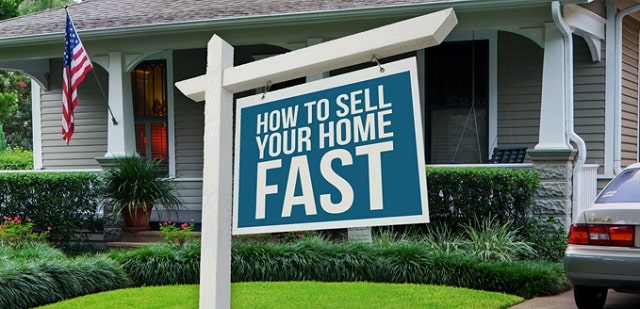
Understanding Market Trends In Real Estate
Selling a home can feel like stepping into a constantly shifting landscape. It pays to understand that factors such as interest rate movements, employment growth, migration patterns, and overall consumer confidence significantly influence real estate markets. For homeowners seeking a fast offer in Kent or elsewhere, monitoring these influential trends makes it easier to decide when and how to list their home. In active markets, listings attract immediate attention and may spark bidding wars, whereas in cooler cycles, a more strategic approach to pricing and marketing is often required.
Data released by the National Association of Realtors reveals that the national average for days on market is gradually decreasing, with the majority of properties selling in less than 30 days if pre-listed and priced well. This trend is being driven by sustained buyer demand and low housing inventory in many parts of the United States. Still, local nuances matter; what works in one city may not be the magic solution in another. Sellers who follow the latest statistics, consult real estate resources, and seek advice tailored to their region are better equipped to make quick, informed decisions that can shave weeks or even months off the typical sale timeline.
Key Factors That Affect How Fast A Home Sells
There are a variety of factors (some within a person's control, others not) that influence how quickly a house sells. By understanding what matters most to buyers, sellers can put their energy where it matters and streamline the selling process. Location remains a primary driver of buyer interest; a property near reputable schools, vibrant downtowns, and essential services is naturally in higher demand. However, even the best-located house can sit without an offer.
Focusing on these elements enables sellers to adjust to the rhythm and helps set realistic expectations for how quickly the right buyer might emerge.
Pricing Your Home Right: The Science Behind The Sale
Attracting a large pool of buyers often hinges on choosing a price that reflects current market realities. When attempting to test the high end of the market, industry studies regularly confirm that homes priced within a close range (usually 5%) of their true value draw more showings and tend to spark faster offers. Reviewing “comps”—recent sales of similar nearby homes—is a crucial first step for getting your number right. If you're aiming to sell quickly, especially in Washington, consider exploring options like 'We Buy Homes in Washington,' which can provide an alternative route for sellers seeking a swift sale without the traditional showings. Sellers can use platforms, consult local MLS data, or work with an experienced agent to analyze relevant sales and adjust for unique features or recent upgrades.
For those seeking further insights into price setting, pricing a home to sell breaks down the science and psychology behind successful pricing strategies. Remember: reducing the price after weeks of no activity usually results in a lower final sales price than listing attractively from the outset. Competitive pricing not only generates more interest but can sometimes initiate a “fear of missing out” response among potential buyers, which is a strong driver for speed.
Simple Upgrades That Can Speed Up The Selling Process
Minor improvements can significantly enhance a home's value, enabling it to sell quickly without incurring substantial costs. First impressions are crucial, and buyers often make quick judgments based on curb appeal, entryways, and fresh paint. The 2023 Remodeling Cost vs. Value Report suggests that improvements such as a new front door, well-chosen landscaping, and modernized lighting offer high returns on investment. Soft, neutral tones, lighting, replacing worn hardware, basic landscaping, and fixing leaks can all make a home more appealing and attract more offers. These affordable tweaks can lead to more offers and fewer days on the market.
How Staging Impacts Buyer Decisions
Staging is a strategy that helps buyers visualize a property as a future home, leading to faster and higher-priced sales. Research from the National Association of Realtors found that buyers find staging makes it easier to visualize a property. To create a visually appealing space, remove nonessential items, keep surfaces clean, and open up floor space. Arrange seating and décor to highlight room features, and add fresh touches like flowers or fruit for warmth and color. A few thoughtful elements, such as a cozy throw blanket or fresh-smelling candles, can emotionally connect buyers with a space, often providing the final push they need to make an offer.
Choosing the Best Way to Sell: Agent, FSBO, or Direct Sale?
Selling methods are numerous, and selecting the right one is crucial. Real estate agents are the top choice for sellers due to their access to marketing tools, negotiation skills, and legal knowledge. They also tap into local buyer networks, increasing exposure and generating offers quickly. The FSBO route is popular for those with real estate experience or a buyer lined up, as it saves on agent commissions. Agent-assisted offers result in faster sales and potentially higher prices, thanks to professional marketing and negotiation. FSBO requires significant work in marketing, showing the property, screening buyers, and handling contracts due to a dire need for repair. Clear objectives, such as quick sale, profit maximization, or hassle minimization, can help identify the best selling route.
Navigating Offers And Negotiations Like A Pro
Offers can be both exciting and stressful; it is crucial to evaluate them holistically, considering factors like buyer financing type, contingencies, and desired closing dates. An all-cash offer with a shorter closing window may be preferable to one with a slightly higher price. Skilled negotiation involves knowing your absolute must-haves and areas of flexibility. In busy markets, sellers with clear priorities and data-backed expectations tend to achieve smoother sales and leave satisfied.
